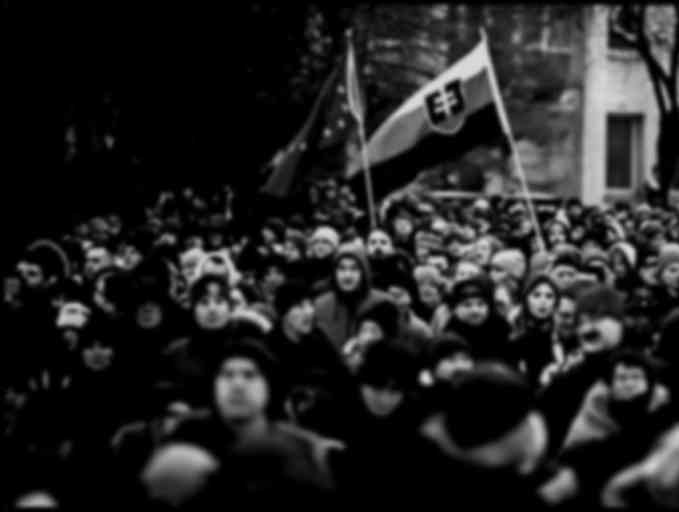Analysis: Is a lasting and just peace within reach? #ceasefire#Macron#Putin#Russia#security#Starmer#Trump#Ukraine#War on Ukraine
Pavel Macko, LTG (ret.) SVK Army, owner and CEO – Macko – SST s.r.o.
While the Americans talk about peace within reach, the Russians are escalating attacks on civilians. Analysis of proposals for peace in Ukraine.

The American Dictate as an Innovation of the Munich Dictate?
U.S. negotiators have unveiled Trump’s alleged seven-point peace plan to halt the fighting in Ukraine. At the same time, US Secretary of State Marco Rubio could not hide his frustration. Just before Easter, he indicated that if the warring parties do not accept Trump’s peace at any cost, which is to be paid mainly by the Ukrainians, the Americans may as well end their mediation mission and devote themselves to something else.
From what has been communicated in public, this would be a humiliating surrender of Ukraine. In fact, even worse than the Munich Dictate to Czechoslovakia under Hitler’s arrangement. During the Munich Dictate, at least Neville Chamberlain and Édouard Daladier naively and cowardly hoped that by curtailing the territory of Czechoslovakia, they would satisfy the aggressive Hitler and prevent war. President Putin uses the same rhetoric as Hitler, only translated from German into Russian and with modified geographical names.
But in the case of Ukraine, Russian aggression has already begun, and we have had a war here for the twelfth year, including a full-fledged war waged for the fourth year. We have not seen a war of this magnitude here in eighty years since the last world war. Ukrainians resisted Russian pressure. Putin did not wait for negotiations, lied to President Macron and Chancellor Scholz until the last moment, and unscrupulously attacked Ukraine. Ukrainians defended themselves spontaneously, even civilians with Molotov cocktails. They proved to the whole world that the Russians do not have what it takes to defeat them in more than three years.
Ukrainians have paid a huge price for this in lives, health, millions of refugees, enormous material and moral damage. And now they are supposed to succumb to some ultimatum, desecrate all those victims and submit without a fight to an external dictate contrary to international law, the UN Charter and morality? Chamberlain and Daladier may have underestimated Hitler and believed his propaganda.
But in the case of Putin, Trump has repeatedly seen the perfidy of his promises and his brutal acts of aggression. If he transformed his self-centeredness and effort to throw everything at his predecessor President Biden into an effort to pander to Russia and humiliate Ukraine, then the consequences will be borne by Ukraine, Europe, but also the United States. President Trump will not be able to make excuses for not being able to count on how Putin will behave.
After two rounds of negotiations, in Paris (April 17) and then in London (April 23), it looked like we had a difficult diplomatic rift ahead of us. Bigger than the one between Trump and Zelensky in the Oval Office of the White House. The Americans presented their „ultimate“ proposal.
The Ukrainians, together with their supporters, especially the United Kingdom and France, later put forward their counter-proposal. We did not know the details, we only had incomplete information from the negotiators mediated through the media. Reuters eventually managed to obtain the texts of both proposals.
On the eve of the funeral of Pope Francis, the American negotiator Witkoff met with President Putin. At the funeral of the pope, President Zelensky met with President Trump, as well as the quartet of Trump, Zelensky, Macron and Starmer met together.
Everyone briefly says that the talks were positive. But we don’t know the details yet. So, let’s discuss in more detail how these proposals for achieving peace differ.
Differences between the American and European-Ukrainian proposals
On April 17, the Americans presented both Russia and Ukraine with what they described as a final proposal to both sides. Although the media referred to Trump’s proposal as a seven-point plan, according to Reuters, it is concentrated in four areas – ceasefire, security guarantees, agreements on territories and economic development.
Ukraine had serious reservations about this proposal, which is why Marco Rubio canceled his participation in the negotiations in London on April 23. Ukraine and its allies have put forward a counterproposal. So, let’s compare these two proposals.
Truce
The American proposal envisages a permanent ceasefire. Both sides would immediately start negotiations on technical details and conditions. Translated into plain language, the U.S. envisages a permanent ceasefire. Therefore, both sides are to start negotiations on the technical conditions for the implementation and verification of the ceasefire. And this is where the risk lies. In recent days, we have seen that a ceasefire without clear rules and verification is very difficult to implement.
Ukraine and its partners are putting more emphasis on this area. An immediate and unconditional ceasefire on land, in the air and at sea is considered by Ukraine and its allies to be the very first and conditional step. That is, an unconditional ceasefire should come first and only then talks about territories and other issues. That is why they are proposing immediate negotiations on technical conditions with participation of the US and European countries.
Compliance with the ceasefire would be monitored from the beginning by the Americans with the support of third countries. The Russians have so far rejected this and then violated all agreements. Ukraine wants transparency. In addition, Ukraine and its European allies demand that part of the ceasefire is that the Russians unconditionally allow the return of all deportees and illegally displaced children. Both sides would exchange all prisoners of war. Russia must release all civilian prisoners.
Security guarantees for Ukraine
The Americans suggest that Ukraine will receive robust security guarantees. The guarantor states will be an ad hoc grouping of European states plus willing non-European states. Ukraine will not seek to join NATO. Ukraine may pursue EU membership.
Learning from the failure of formal declarations and guarantees, as in the case of the Budapest Memorandum, Ukraine is demanding stronger, in their opinion, real security guarantees against the resumption of Russian aggression. They want Ukraine to receive robust security guarantees, including from the US (an agreement similar to Article 5 of NATO), while there is no consensus among the allies on NATO membership. No restrictions on the Ukrainian Defense forces.
The Ukrainian proposal also envisages an ad hoc grouping of military forces of European and willing non-European countries. Ukraine proposes that there should be no restrictions on the presence, weapons and operations of foreign forces on the territory of Ukraine. There is no contradiction regarding EU membership.
Territory
In this area, there are the most fundamental and so far, irreparable contradictions and incompatible overall philosophies of approach. The U.S. formally (de jure) recognizes the Russian control of Crimea. The US will de facto recognize Russian control over the Luhansk region. The US will de facto recognize Russian-controlled of the Donetsk, Zaporizhzhia and Kherson regions. The territories in the Kharkiv region will be returned to Ukraine. Ukraine will regain control of the Zaporizhzhia nuclear power plant through US control and administration, with electricity distributed to both countries. Ukraine will have free passage of the Dnipro River and control of the Kinburn Spit.
This American proposal caused a great wave of resentment not only in Ukraine, but definitely pleased President Putin. This proposal is the destruction of a decade of international order in force and unilaterally rewards the aggressor and potentially incentivizes aggression around the world to acquire territories.
According to the Ukrainian proposal, territorial issues will be discussed and fully decided only after a full and unconditional ceasefire. That is, a ceasefire should be reached first, and only then should these issues be resolved. Negotiations on territories will begin on the basis of the line of control.
Thus, Ukraine is aware that it is not currently able to push the Russians out of the occupied territories. But it is interested in resolving the fates of abused and imprisoned people, it wants the return of kidnapped children. But most importantly, it cannot formally recognize the permanent loss of territory. President Zelensky and the parliament do not even have the right to do so according to the constitution. In addition, it would be a guide to further aggression a few years later.
Economy
Under Trump’s proposal, the U.S. and Ukraine will implement economic cooperation in the field of minerals. Ukraine is to be fully reconstructed and financially compensated. Sanctions against Russia resulting from this conflict since 2014 will be removed. U.S.-Russian cooperation in the field of energy and other industries.
The Ukrainian counterproposal is not fundamentally contradictory but rather specifies some details. In the case of reconstruction and financial compensation, it proposes that they will also include Russian sovereign assets will remain frozen until Russia compensates damage to Ukraine.
The view on the timing and pace of lifting US sanctions against Russia is also different. These are to be gradually released once sustainable peace is achieved and can be restored in the event of a breach of the peace agreements.
Conclusion: It is quite certain that these differences were the subject of conversation between Presidents Zelensky and Trump, as well as in other conversations. But how much these positions have converged and whether they are relevant to Russia at all remains to be seen.
NASPAŤ
